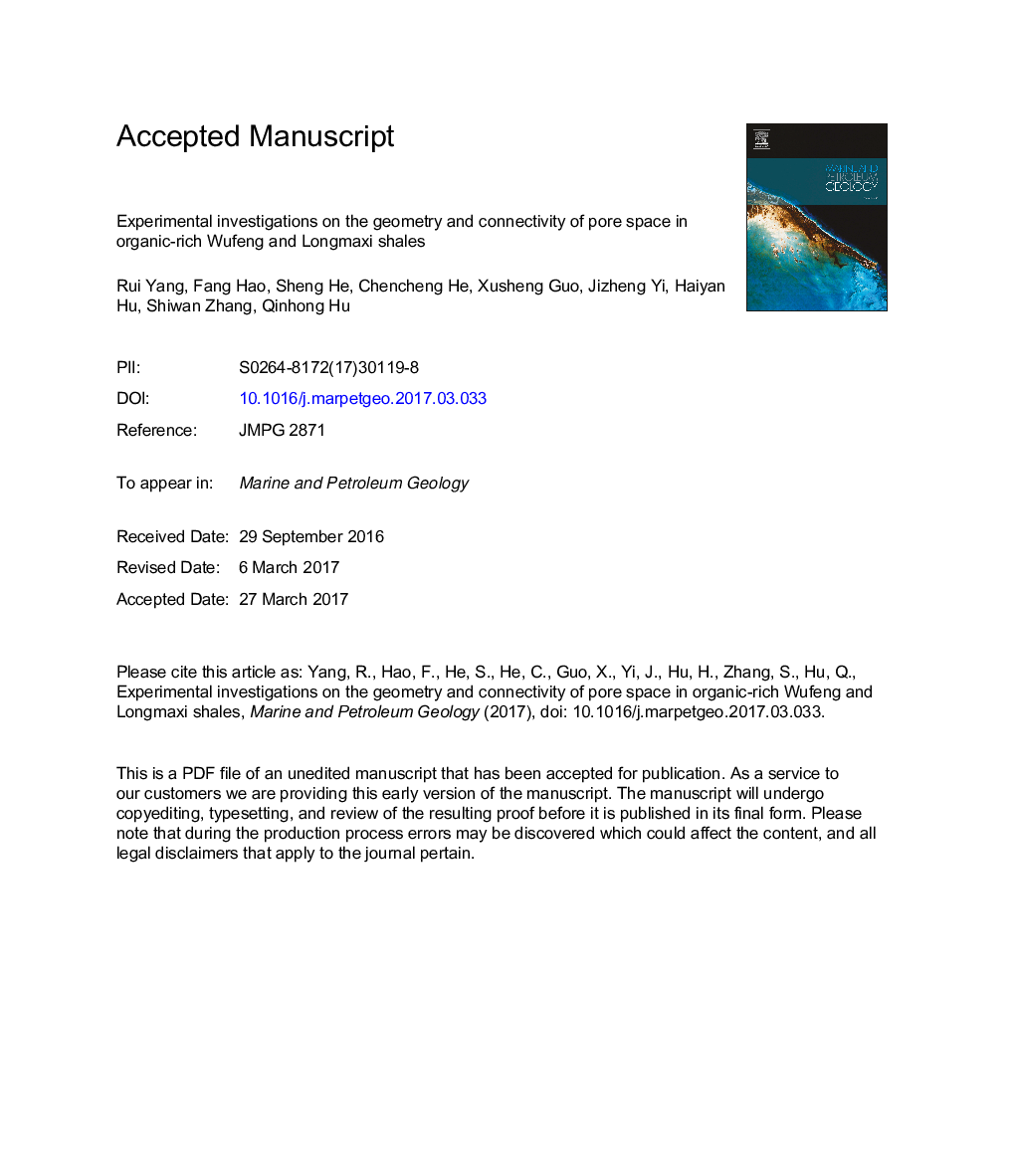| Article ID | Journal | Published Year | Pages | File Type |
|---|---|---|---|---|
| 5782058 | Marine and Petroleum Geology | 2017 | 63 Pages |
Abstract
Most of the visible pores from SEM work in Wufeng and Longmaxi shales are within nm- and μm-size regimes and belong to organic matter (OM) pores. The shapes of OM pore in Longmaxi samples are elliptical, bubble-like, irregular or rounded. Wufeng pores are mainly irregular, linear and faveolated, even though two shales have small depth difference, as well as similar thermal maturity, kerogen type and TOC content. Nano-scale pores in Longmaxi are mainly associated with narrow platelike or slitlike pores with pore size of 3-50 nm; while inkbottle pores are dominant in Wufeng samples and over 88% of the pore volume is contributed by pores with diameter <20 nm. Overall, porosity, pore volume and surface area values from Wufeng samples are much higher than those in Longmaxi, which is mainly correlated with the different TOC contents and mineral compositions. MICP tests show that a total of 5 inflection points (indicative of different connected pore networks) are identified in all pressure regions for Longmaxi, while only 2 for Wufeng in high pressure region with the associated permeability at nano-darcy range. Imbibition curves of n-decane are divided into three stages: the initial stage (Stage â
), linear imbibition stage (Stage â
¡) and late imbibition stage (Stage â
¢), and the slopes of linear imbibition stage are around 0.5, suggesting well-connected pore spaces for n-decane. In contrast, imbibition curves for DI water are divided in two stages with linear slopes of between 0.25 and 0.5, indicating moderately-connected pore networks for the movement of DI water. This is consistent with the mixed-wet nature of these shales, with observed weak wettability for hydrophilic, while complete wetting for hydrophobic fluids.
Keywords
Related Topics
Physical Sciences and Engineering
Earth and Planetary Sciences
Economic Geology
Authors
Rui Yang, Fang Hao, Sheng He, Chencheng He, Xusheng Guo, Jizheng Yi, Haiyan Hu, Shiwan Zhang, Qinhong Hu,
